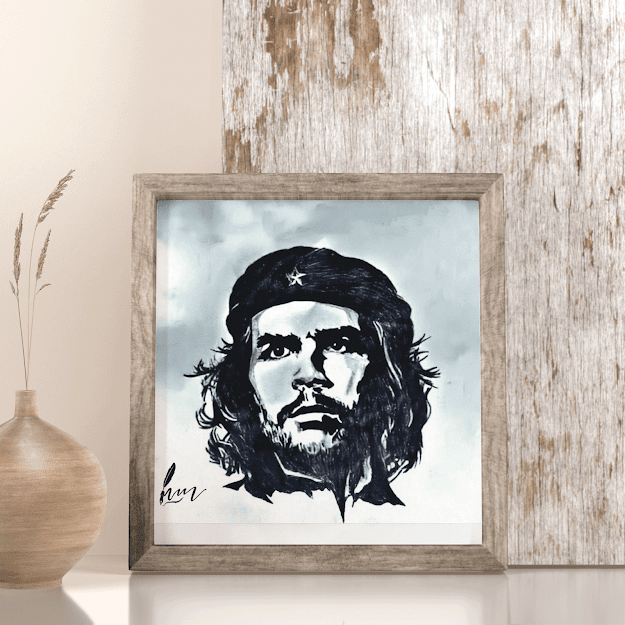Che Guevara Art Print
by Alhmam
Ernesto "Che" Guevara de la Serna was an Argentine Marxist revolutionary who was a prominent figure during the Cuban Revolution. Guevara studied medicine before traveling around South America, observing the conditions that spurred his Marxist beliefs. He aided Fidel Castro in overturning the Batista government during the late 1950s, and then held key political offices during Castro's regime. Guevara later engaged in guerrilla action elsewhere, including in Bolivia, where he was captured and executed in 1967.Early Life
Guevara was born into a middle-class family on June 14, 1928, in Rosario, Argentina. He was plagued by asthma in his youth but still managed to distinguish himself as an athlete. He absorbed the left-leaning political views of his family and friends, and by his teens had become politically active, joining a group that opposed the government of Juan Perón.
After graduating from high school with honors, Guevara studied medicine at the University of Buenos Aires, but in 1951 he left the school to travel around South America with a friend. The poor living conditions he witnessed on their nine-month journey had a profound effect on Guevara, and he returned to medical school the following year, intent on providing care for the needy. He received his degree in 1953.
The Cuban Revolution
However, as Guevara's interest in Marxism grew, he decided to abandon medicine, believing that only revolution could bring justice to the people of South America. In 1953, he traveled to Guatemala, where he witnessed the CIA-backed overthrow of its leftist government, which only served to deepen his convictions.
By 1955, Guevara was married and living in Mexico, where he met Cuban revolutionary Fidel Castro and his brother Raúl, who were planning the overthrow of Fulgencio Batista's government. When their small armed forces landed in Cuba on December 2, 1956, Guevara was with them and among the few that survived the initial assault. Over the next few years, he would serve as a primary advisor to Castro and lead their growing guerrilla forces in attacks against the crumbling Batista regime.
By 1965, with the Cuban economy in shambles, Guevara left his post to export his revolutionary ideologies to other parts of the world. He traveled first to the Congo to train troops in guerrilla warfare in support of a revolution there but left later that year when it failed.
After returning briefly to Cuba, in 1966, Guevara departed for Bolivia with a small force of rebels to incite a revolution there. He was captured by the Bolivian army and killed in La Higuera on October 9, 1967.
Since his death, Guevara has become a legendary political figure. His name is often equated with rebellion, revolution and socialism. Others, however, remember that he could be ruthless and ordered prisoners executed without trial in Cuba. In any case, Guevara's life continues to be a subject of great public interest and has been explored and portrayed in numerous books and films, including The Motorcycle Diaries (2004), which starred Gael García Bernal as Guevara, and the two-part biopic Che (2008), in which Benicio Delthat ar
Tags:
The drawing




Post a Comment
0 Comments